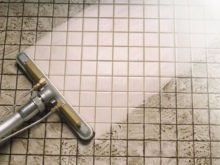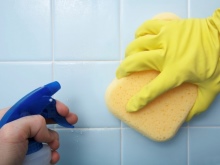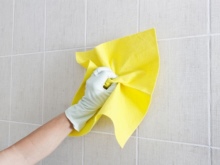Tile Care
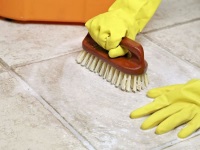
Is ceramic tile care different from porcelain tile care?
Ceramic tile and porcelain tile are very sensitive to abrasive particles found in tile care products. That is why Their use is strictly forbidden. Solutions containing acids are also harmful to porcelain stoneware and tiles.
In general, there is not much difference in care. The main thing is to choose a good product that can cope with dirt and will not damage the tiles.
The surface of porcelain tiles can be matte and polished. Matte is easier to care for. Polished consists of micropores, which contribute to staining.
Regular and proper cleaning retains the service life of the facing material.
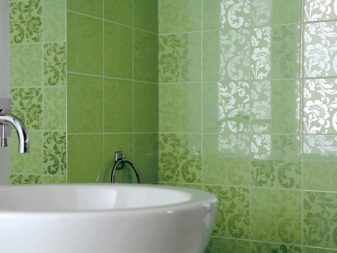
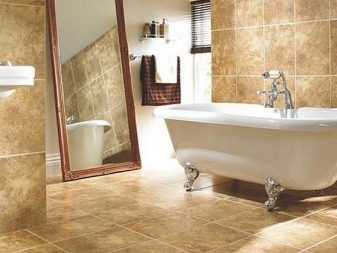
Household chemicals
It is unacceptable to use detergents and cleaners on tile, it is inadmissible to use compounds that contain abrasive particles, Because they scratch the gloss of the tiles. In this regard, creamy and liquid household chemicals are ideal. Powders are not suitable.
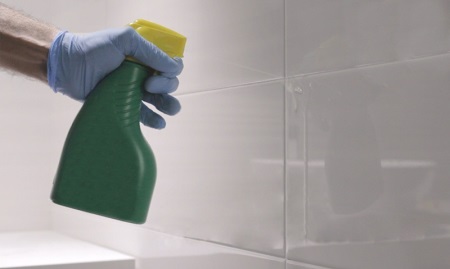
Traditional remedies
It so happens that, starting to clean, we find that the detergent has run out. To replace it, we can use at-home remedies, which hostesses add to their culinary masterpieces.
- Vinegar. It will destroy the fungus and disinfect. The essence must be diluted with water at a ratio of 1: 11. If there is already a 6% solution available, it is quite suitable. It will be more convenient to pour it into a sprayer. Then apply it to the walls. If there are strong impurities, leave the composition for a while. The acid will destroy the deposits. The walls can be cleaned with a brush, the main thing is that the bristles do not have staining. Otherwise, they will just fade and make cleaning difficult. After cleaning, rinse the walls with water and wipe with a dry cloth. Microfiber is ideal. Don't forget the safety rules. Vinegar is an acid, so wear gloves and be careful.
- Citric Acid. Its action is similar to vinegar, and the advantage is the lack of a strong smell. "Lemon" is enough just to sprinkle a sponge and treat the tiles.
- Chlorine lime or "Whitewash." This is a powerful disinfectant that, plus it can bleach tiles. The disadvantage is a very pungent smell. Therefore, treatment with chlorine should be carried out quickly, as its vapors negatively affect our body. The use of rubber gloves is a prerequisite for work.
- Baking soda. Able to remove heavy old dirt. However, it is necessary to use this tool carefully: the abrasive components can damage the surface layer of the tile. Treatment with a mushy mixture is carried out very carefully, strong pressure on the sponge or rag is not allowed.
- Ammonia alcohol. A good remedy that will make the tiles shine. Prepare the necessary composition is simple: dissolve a tablespoon of ammonia in 2 liters of water. The solution is sprinkled on the tiles (use a sprayer), and after 5 minutes. Wipe first with a damp and then with a dry cloth.
- Soap solution. A wonderful tool, easy to use and does not cause any discomfort.
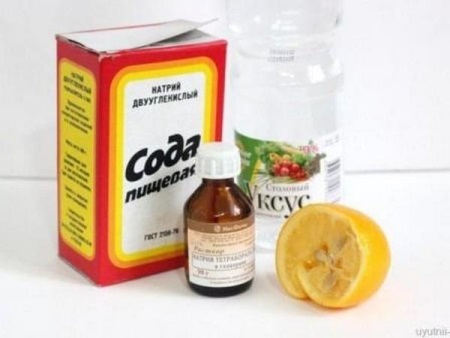
Cleaning the joints between the tiles
Covering the walls of the bathroom can not be without seams and joints. It is they are a place of accumulation of moisture and, as a consequence, fungus, mold. To prevent fungus marred by its presence in the bathroom, the joints are treated with special antifungal agents. Any seller-consultant will help in their choice. Everyone will be able to pick up something to their means and preferences.
Applied to the seams of the product is usually left for half an hour. This time is enough so that the dirt will leave the seam, and it will be easy to remove.
Clean the space between the seams with a regular toothbrush. Brushes made of metal are strictly forbidden in this operation.
A steam generator is very good at cleaning seams. Its additional function is disinfection.
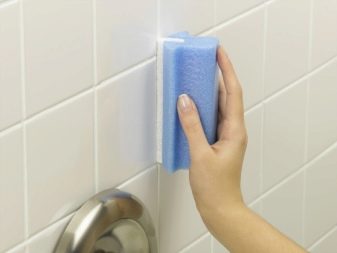
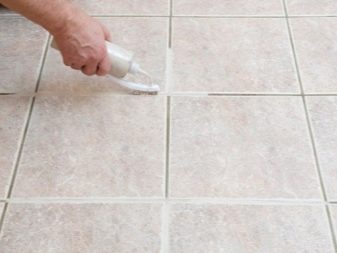
Antifungal and antiseptic agents
Any product that fights mold and fungus contains a biocide additive. It is this component that removes mold.
Household chemistry stores offer a wide range of all kinds of products that not only remove, but also prevent further occurrence of such an unpleasant phenomenon. They are also called "mold removers". As a rule, they are liquid. They are quite effective and easy to use.
Everyone should have a set of such preparations, since the humidity of the bathroom is always an ideal environment for mold and fungus.

Cleaning Tips
- The tiled floor in the bathroom is well cleaned with a wool rag. A mop fitted with a soft fringe will also help with cleaning. Just before cleaning, close your bathroom door tightly and open the hot water. Steam deposited on the tiles will moisten the surface and thus help make cleaning faster and better.
- Tiled walls are washed, starting from the top, and wiped dry, on the contrary, from the bottom.
- The detergent should not treat a large area of tile at once.
- It is recommended to clean the tiles once a week. Less often is not acceptable. A damp bathroom environment is a condition for mold fungus. Weekly cleaning is therefore a must for maintaining comfort and cleanliness.
- Rubber gloves, goggles and a respirator are worn when treating tiles with compositions that have caustic odors.
